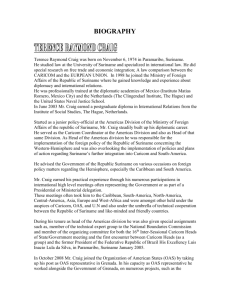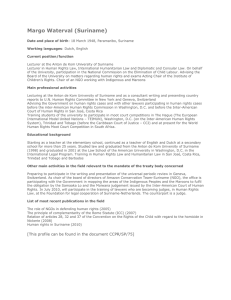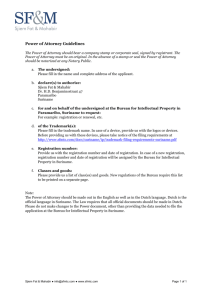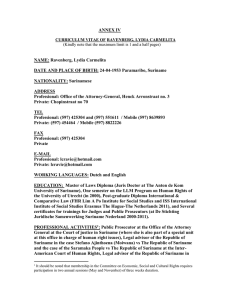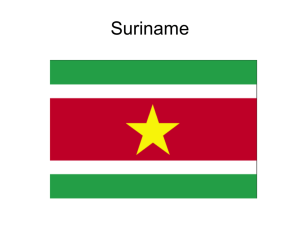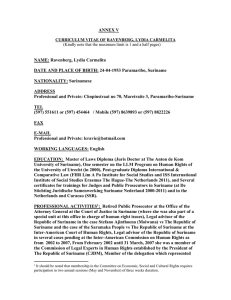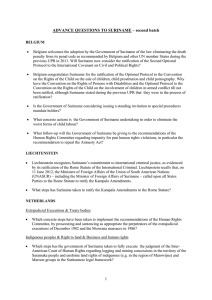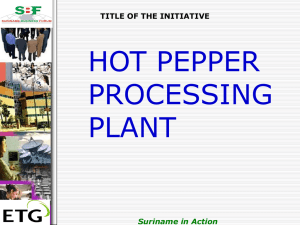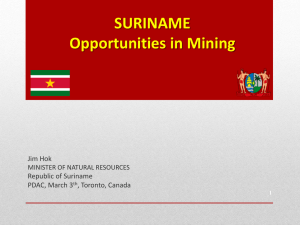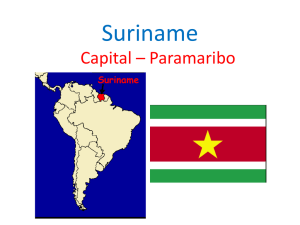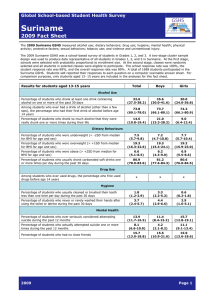Agribusiness and Agriculture - the Suriname Case Foundation Polytechnic College Suriname
advertisement
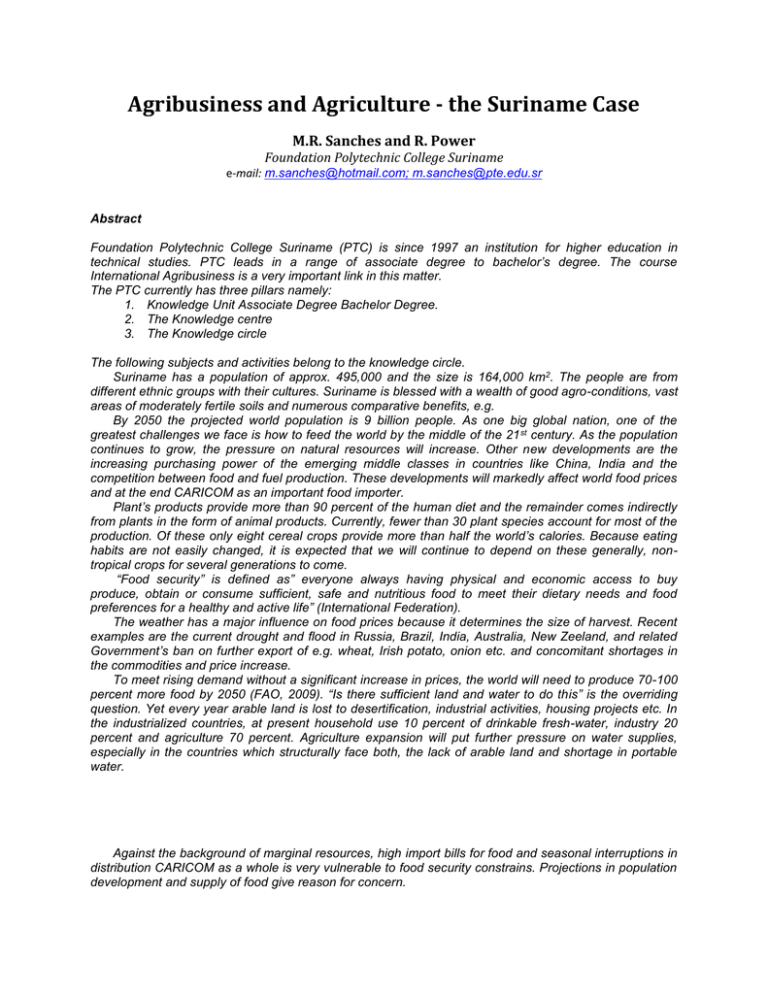
Agribusiness and Agriculture - the Suriname Case M.R. Sanches and R. Power Foundation Polytechnic College Suriname e-mail: m.sanches@hotmail.com; m.sanches@pte.edu.sr Abstract Foundation Polytechnic College Suriname (PTC) is since 1997 an institution for higher education in technical studies. PTC leads in a range of associate degree to bachelor’s degree. The course International Agribusiness is a very important link in this matter. The PTC currently has three pillars namely: 1. Knowledge Unit Associate Degree Bachelor Degree. 2. The Knowledge centre 3. The Knowledge circle The following subjects and activities belong to the knowledge circle. Suriname has a population of approx. 495,000 and the size is 164,000 km2. The people are from different ethnic groups with their cultures. Suriname is blessed with a wealth of good agro-conditions, vast areas of moderately fertile soils and numerous comparative benefits, e.g. By 2050 the projected world population is 9 billion people. As one big global nation, one of the greatest challenges we face is how to feed the world by the middle of the 21 st century. As the population continues to grow, the pressure on natural resources will increase. Other new developments are the increasing purchasing power of the emerging middle classes in countries like China, India and the competition between food and fuel production. These developments will markedly affect world food prices and at the end CARICOM as an important food importer. Plant’s products provide more than 90 percent of the human diet and the remainder comes indirectly from plants in the form of animal products. Currently, fewer than 30 plant species account for most of the production. Of these only eight cereal crops provide more than half the world’s calories. Because eating habits are not easily changed, it is expected that we will continue to depend on these generally, nontropical crops for several generations to come. “Food security” is defined as” everyone always having physical and economic access to buy produce, obtain or consume sufficient, safe and nutritious food to meet their dietary needs and food preferences for a healthy and active life” (International Federation). The weather has a major influence on food prices because it determines the size of harvest. Recent examples are the current drought and flood in Russia, Brazil, India, Australia, New Zeeland, and related Government’s ban on further export of e.g. wheat, Irish potato, onion etc. and concomitant shortages in the commodities and price increase. To meet rising demand without a significant increase in prices, the world will need to produce 70-100 percent more food by 2050 (FAO, 2009). “Is there sufficient land and water to do this” is the overriding question. Yet every year arable land is lost to desertification, industrial activities, housing projects etc. In the industrialized countries, at present household use 10 percent of drinkable fresh-water, industry 20 percent and agriculture 70 percent. Agriculture expansion will put further pressure on water supplies, especially in the countries which structurally face both, the lack of arable land and shortage in portable water. Against the background of marginal resources, high import bills for food and seasonal interruptions in distribution CARICOM as a whole is very vulnerable to food security constrains. Projections in population development and supply of food give reason for concern. With respect to CARICOM’s policy on both, “food security” and “food independence” a long-term vision and policy are proposed for discussion; pragmatic ways to mitigate current and future problems in the food supply of our community are presented with the ultimate goals of contributing to CARICOM’s need in agricultural products at an acceptable bill. Keywords: food security Suriname, Foundation Polytechnic College ,agricultural products
